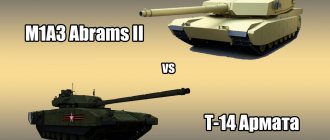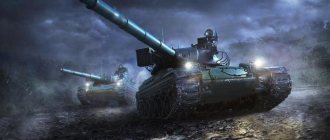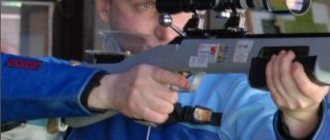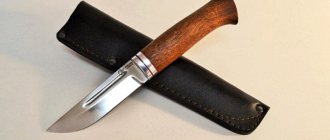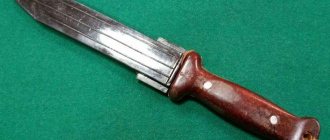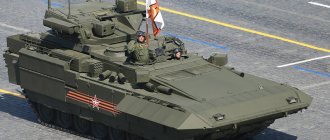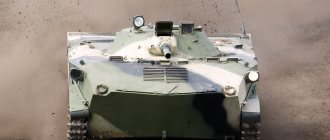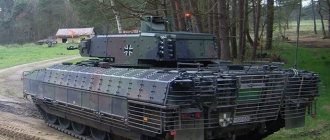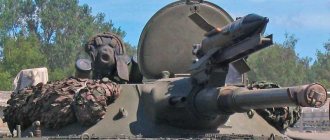The BMP-3 infantry fighting vehicle, made in the USSR, has been in service for more than thirty years and has been supplied to dozens of foreign countries. We will analyze the design of the armored vehicle and its technical properties, tell the history of its appearance and use in the theater of operations, reveal the features of the modifications, the pros and cons of the vehicle.
BMP-3s participate in the Victory Parade on Red Square in Moscow
History of the development of infantry fighting vehicle (IFV) 3
The first infantry fighting vehicle in world history was designed in the USSR in 1965, and the following year it was built for the first time and, after short tests, entered service with the troops.
The design of the infantry fighting vehicle was carried out by the Special Design Bureau (SKB), later renamed SKBM (now JSC SKBM).
The design and design organization was part of the structure of the Kurgan Machine-Building Plant), which in Soviet times was engaged in the production of infantry fighting vehicles, and now produces infantry fighting vehicles, as well as equipment based on them. The SKBM team began developing the Troika in 1977.
Further events from the history of the car:
- 1983-1986 — testing a new armored vehicle;
- 1987 - the first products became available to motorized rifle troops;
- May 9, 1990 - first demonstration to the public during the parade in Moscow in honor of the 45th anniversary of the Victory;
- 1990s - despite the economic crisis that hit the Russian defense industry, Kurganmashzavod continues to actively build infantry fighting vehicles, exports of armored vehicles to the United Arab Emirates, the Republic of Korea, Kuwait, and the Republic of Cyprus begin;
- 1997 - China bought the rights to manufacture its own BMP-3 warhead for use in assembling its Type 04 or ZBD-04 combat vehicles;
- 2015 - presentation at arms exhibitions of modifications “Vityaz”, “Derivation”, “Dragoon”;
- 2018 - signing of a contract for the supply of BMP-3 to the Armed Forces of the Russian Federation with the installed unsurpassed combat module "Epoch";
- June 2022 - testing of armored vehicles with the Epoch combat vehicle begins.
Today, in addition to Russia, the combat vehicle is in service with the security forces of twelve states - three former subjects of the USSR and nine non-CIS countries.
Machine evaluation
Suvorov Sergey Viktorovich, press secretary of Military-Industrial Company CJSC, expert in the field of armored weapons, colonel of reserve tank forces, candidate of military sciences:
| Before I had to operate the BMP-3 myself, I had repeatedly heard a variety of reviews about this vehicle, most of them negative and mainly from those who had not seen it in person. Over the course of three years, I was able to evaluate from my own experience all the disadvantages and advantages of the BMP-3. My opinion is that the car is wonderful, there is no other one like it in the world, which means that this car has the right to exist and further develop. These words are confirmed by the contract for the purchase of BMP-3 by the UAE army. But the UAE government made the decision to purchase these vehicles after comprehensive competitive tests in this country of the Russian BMP-3, the American M2A1 Bradley and the British MCV80 Warrior. |
Main tasks and goals
Infantry fighting vehicles are supplied to the troops for the further movement of soldiers to the battlefield for the purpose of infantry support for tanks or to the point of execution of another combat mission.
The use of infantry fighting vehicles makes the infantry as mobile as possible and protected by the power of armor, the protective complex of an armored vehicle, missiles, cannons and machine guns.
An infantry fighting vehicle differs from an armored personnel carrier (APC) in the presence of a greater number of protective systems, the ability to fight in the zone of use of weapons of mass destruction, and even greater fire potential. The main function of an armored personnel carrier is to transport troops, while an infantry fighting vehicle is to provide fire support for airborne soldiers and friendly troops in battle.
The BMP-3 is designed to land 7 infantrymen. The crew consists of 3 fighters.
BMP-3 at the disposal of a training company
Design
The main elements of the vehicle's design are the body, a set of weapons, surveillance equipment, electrical equipment and communication devices, engine and transmission, chassis, protective complex, fire-fighting equipment and camouflage system.
Armored Corps
The frontal armor cannot be penetrated by 30 mm shells from a distance of 200 m, the roof and sides cannot be penetrated by a 12.7 mm armor-piercing bullet from one hundred to two hundred meters.
The location of fuel tanks in the front compartment of the armored vehicle additionally protects the personnel located inside the infantry fighting vehicle.
When landing infantry paratroopers, a roof opens vertically over the passage, partially blocking them from bullets and shrapnel.
Surveillance and communications equipment
The BMP-3 is equipped with a rich set of surveillance devices:
- TNPO-170A - in the amount of 18 units installed in different places;
- TNP-165A, placed in the control compartment;
- TNP-350B for viewing the area when crossing water obstacles, placed in the driver’s compartment;
- TNPT-1 for viewing the rear hemisphere of the terrain;
- TVNE-1 PA for visibility when driving at night;
- TKN-3MB - day and night for the commander to review the area;
- TNP3VE01-01 - four units, for surveying the terrain and firing by paratroopers.
For external communication, the combat vehicle is equipped with a tank radio station R-173 with a receiver R-173P, and for internal communication - telephone intercom equipment.
Engine and transmission
The ten-cylinder UTD-29 engine has the following characteristics:
- Multi-fuel capability - in addition to diesel fuel, it can be refueled with various types of gasoline and kerosene;
- Four stroke;
- Power - 500 hp;
- Dimensions - 0.997 x 1.228 x 0.598 m, weight - 0.91 t;
- Rotation speed - 2600 rpm.
The tanks, which hold 690 liters of fuel, contain a porous filler that prevents ignition and detonation of the fuel when the armor and containers are penetrated.
The motor and hydromechanical transmission (HMT) form an integral power unit mounted on one fulcrum. The hydraulic drive allows the combat vehicle to turn smoothly, and the absence of a clutch pedal (gears are switched only by lever movements) greatly facilitates the driver’s work during long marches and during battle.
The motor is supplied with air when moving in an aquatic environment through an air intake pipe raised on the right behind the combat vehicle turret.
Chassis
BMP-3 on the move (picture)
The chassis consists of a tracked propulsion unit, suspension, two water-jet propulsion units, and stopping brakes.
The caterpillar propulsion unit consists of 6 dual road wheels located on the sides, 3 support rollers, guide and drive wheels, and the caterpillar itself.
The BMP-3 suspension is individual, torsion bar, with hydraulic shock absorbers.
Water jet propulsion is activated when moving afloat. They, like the tracked one, are equipped with a reverse mechanism, providing reverse gear if necessary, which allows you to quickly escape from enemy fire without wasting time on a turn.
The chassis is controlled by manipulating the steering column. Its structure includes a steering wheel, gear shift knobs and water jet control handles.
The stopping brakes of the combat vehicle are disk, dry friction, with a hydraulic booster in the drive.
Protection of domestic infantry fighting vehicles: more serious, thicker, more powerful
An infantry fighting vehicle must transport and disembark paratroopers, as well as support them with fire. Another important function of such equipment is to protect people from enemy bullets, shells and shrapnel. The means of destruction used on the battlefield are constantly evolving, and this leads to changes in the means of protecting armored vehicles. New projects use modern materials with increased strength and durability characteristics, various design solutions, etc. Also, from a certain time, it was proposed to equip equipment with special attachments for one purpose or another.
Over the course of several decades, the protection of Soviet and Russian infantry fighting vehicles has come a long way, incorporating a lot of original ideas and solutions. The evolution of armor and additional protection is of great interest and reveals the history of technology from a new perspective. Let's consider the main projects of domestic infantry fighting vehicles from the point of view of standard and additional protection.
Unified samples
The first serial infantry fighting vehicle in our country, and at the same time in the world, was the BMP-1, which was put into service in 1966. This car initially had special requirements, which affected its final appearance. Using a number of already known, as well as newly proposed ideas, the designers managed to solve all the tasks and ensure compliance with current requirements. The BMP-1 remained in series until the early eighties, and the operation of individual vehicles of this type continues to this day.
The serial BMP-1 had to rely only on its armor. Photo: Wikimedia Commons
In accordance with the technical specifications, the frontal projection of the future BMP-1 had to withstand a hit from a 23-mm armor-piercing projectile when fired from 500 m. It was also necessary to provide all-round protection from 7.62-mm armor-piercing bullets when fired from 75 m. GSKB-2 designers The Chelyabinsk Tractor Plant coped with such tasks by developing a new body. It was proposed to make most of the body parts from rolled steel of high hardness. The design also included aluminum parts.
To enhance the protection of the frontal projection, the BMP-1 received armor with rational angles of inclination. The upper frontal sheet, 7 mm thick, was placed at an angle of 80° to the vertical, the lower 19 mm - at an angle of 57°. Thus, the reduced thickness of these parts was 40 and 39 mm, respectively. At the same time, the upper frontal part had a large hatch for access to the engine compartment. The sides of the body were covered with sheets 16 and 18 mm thick. The thinner top sheet was installed at an angle of 14°. The stern was 16 mm thick and was tilted back at an angle of 19°. The roof had a thickness of 8 mm.
The tower cap also received differentiated protection. Its frontal part had a thickness of 23 mm with a slope of 42° (given thickness 31 mm) and was complemented by a mask of variable thickness, from 26 to 33 mm. The turret had a 19-mm side, inclined at 36°, and a 13-mm stern, inclined at 30°. The top of the tower was covered with a 6 mm sheet.
BMP-2D with enhanced protection in Afghanistan. Photo Acemodel.com.ua
For its time, such protection was quite powerful, and in addition, it met the customer’s requirements. The BMP-1 went into production and entered service with the troops. The infantry received a convenient vehicle capable of supporting it with machine gun and cannon fire. For several years, the issue of protecting transported infantry was generally closed.
In 1977, a new infantry fighting vehicle, the BMP-2, entered service with the Soviet Army. It was created on the basis of the previous vehicle and differed, first of all, in the equipment of the fighting compartment. For a number of reasons, the armor has undergone almost no changes. The design of the housing has changed slightly in accordance with the installation of new devices and equipment. The tower has undergone major alterations, but its protection parameters have remained at the same level.
BMP-1 and BMP-2 with all-round bulletproof protection and a reinforced frontal projection that can withstand small-caliber artillery shells, were built in large series and were most actively used by the troops. The existing state of affairs remained unchanged for several years, but then modernization was needed.
Afghan experience
Soon after the start of hostilities in Afghanistan, Soviet motorized riflemen faced a serious problem. The enemy had a large number of heavy machine guns and rocket-propelled grenade launchers. Machine guns could hit Soviet infantry fighting vehicles from all angles, with the exception of frontal ones, and grenade launchers had no such restrictions at all. Significant losses of light armored vehicles quickly led to the launch of a new project.
BMP-2D in the museum. Photo: Wikimedia Commons
Already in 1981, the Kurgan Machine-Building Plant, which produced two types of infantry fighting vehicles, developed a general project for the modernization of unified vehicles. In the shortest possible time, the modified equipment was tested, and in 1982 it entered service. Infantry fighting vehicles with reinforced armor were designated BMP-1D and BMP-2D. The letter "D" meant "modified".
Project “D” provided for strengthening the side projection and installing additional mine protection, but did not require any noticeable modifications to the hull. It was proposed to mount armor plates several millimeters thick on the sides of the hull, at some distance from the standard armor. These screen sheets had holes for firing through the embrasures of the hull. Below the additional side armor there were screens of five separate sections that covered the chassis. An additional mine protection plate appeared under the driver's and senior gunner's seats.
Additional armor increased the vehicle's resistance to heavy machine gun bullets. At the same time, the mass of the vehicles increased and they lost buoyancy. However, this property was not required in Afghanistan.
In 1982, the army received the first BMP-1D and BMP-2D vehicles. Basically, these were production samples, on which new armor was attached in the conditions of a repair plant. This type of equipment was primarily transferred to air assault units. During combat operations, infantry fighting vehicles with the letter “D” performed well: the armor significantly reduced the loss of people and equipment. Operation of the BMP-1D and BMP-2D continued until the withdrawal of troops from Afghanistan.
The BMP-3 received reinforced armor based on aluminum and steel. Photo by the author
According to available data, soon after returning home, almost all available equipment lost additional protection. She was to continue to serve in the configuration of conventional linear infantry fighting vehicles, devoid of additional screens. Only a few machines in the “D” configuration have survived, which are now museum exhibits. As far as is known, the issue of installing mounted armor of the existing type was not raised in the future.
Strengthened "Troika"
Work on the future BMP-3 started in the late seventies and took several years. A number of organizations had to study the existing realities and possibilities, and on their basis formulate a technical specification for a new armored vehicle. As a result, in 1983, a final task appeared, which, among other things, took into account the experience of the war in Afghanistan. Experts decided that the future armored vehicle should have all-round protection against heavy machine guns, and its forehead should be strengthened to protect against 30 mm shells.
The assigned tasks were solved in a very interesting way. The BMP-3 received relatively thick armor, made primarily of aluminum sheets. This made it possible to obtain a sufficient level of protection with a significant reduction in weight compared to steel armor of the same strength. In some areas of the hull, aluminum parts are complemented by steel armor, together with which they form spaced protection. The dome of the tower was built in a similar way.
BMP-3 with hinged screens and the Arena active protection complex. Photo: Btvt.narod.ru
According to known data, the upper frontal part has a thickness of 18 mm at a large angle of inclination. The large middle frontal one is formed by parts with a thickness of 10, 12 and 60 mm from different materials. Lower frontal - a package of 10- and 60-mm sheets. The sides of the body are made of aluminum sheets with a thickness of 43 to 60 mm. The stern is 13 mm thick, the roof is 15 mm, and the bottom is 10 mm. The turret forehead consists of parts with a thickness of 16 and 50 mm. The stern has a thickness of 43 mm, the roof is 18 mm.
It is alleged that the frontal projection of the BMP-3 can withstand fire from a 30-mm 2A42 automatic cannon. Other armor parts protect people and equipment from armor-piercing bullets of 12.7 mm caliber. Protection is provided against fragments of artillery shells and some explosive devices.
The Soviet army began operating BMP-3 infantry fighting vehicles in the late eighties. The advantages of this technology over existing models were obvious, but known problems of past decades prevented the army from being completely re-equipped. As a result, the BMP-3, which differs from the BMP-1 and BMP-2 in enhanced protection, cannot compete with them in numbers.
BMP-3 with additions
Already in the eighties, the first options were proposed to enhance the protection of the new infantry fighting vehicle using certain means. However, not all of them were able to reach serial production and operation. A number of interesting proposals never left the stage of testing and promotion at various exhibitions.
Option to equip the BMP-3 with Cactus dynamic protection. Photo by Oruzhie.info
From the point of view of additional protection, the BMP-3M project, presented by the Kurgan Machine-Building Plant in 1999, is of greatest interest. It was proposed to mount additional screens on the sides of the hull, increasing the overall resistance to fire. In addition, the vehicle was equipped with the Arena active protection complex. A characteristic block of detection radar antennas was placed on the roof of the tower, and defensive ammunition launchers were installed along its perimeter. It was assumed that the BMP-3M would be able to timely find and destroy incoming grenades or missiles, and its own and mounted armor would protect it from bullets, shells and shrapnel.
In 2001, a presentation of the updated BMP-3 with dynamic protection units took place. A large number of relatively large protection blocks were placed on the middle frontal part and sides. These products were intended to combat cumulative ammunition. The demolition charge of the block was located inside an armored box, resistant to 12.7 mm small arms bullets. The aft part of the hull, which houses the engine and transmission, had to be equipped with lattice screens to avoid overheating.
Two years later, the BMP-3 with the Shtora-1 optical-electronic suppression complex was shown for the first time. This system, operating in automatic mode, could detect radiation from a laser rangefinder or an enemy anti-tank missile control system. Next, the automation had to shoot smoke grenades or suppress enemy optics using a pair of powerful infrared searchlights. A demonstration of such protection took place at the IDEX-2003 exhibition. The infantry fighting vehicle was attacked in turn by several anti-tank systems of different types, and not a single missile was able to hit it.
Experimental BMP-3 with the Shtora-1 optical-electronic suppression complex. Photo Militaryrussia.ru
Various ways to increase the level of protection of the BMP-3 were of interest, but were not without drawbacks. First of all, the proposed equipment increased the weight and dimensions of the equipment. In particular, the Cactus reactive armor kit weighed about 4 tons and increased the width of the vehicle from the original 3.3 m to almost 4 m. This increase in size and weight reduced mobility and also did not allow the vehicle to float.
For technical and other known reasons, none of the proposed options for enhancing the protection of the BMP-3 went into production. As a result, the Russian army and some foreign armed forces continue to use equipment of this type, which has only standard aluminum-steel armor. Apparently, this situation will never change.
Medium "Kurganets"
There is reason to believe that now modernizing the BMP-3 simply does not make sense, since it is being replaced by new models of equipment. First of all, this is a medium-weight infantry fighting vehicle based on the Kurganets-25 unified tracked platform, developed by the Kurgan Machine-Building Plant. This equipment is already undergoing state testing and will join the fleets of combat units in the foreseeable future.
According to various reports and estimates, the hull of the Kurganets-25 type BMP has combined armor, probably built on the basis of steel and aluminum. On top of its own armor, mounted dynamic protection units are mounted, which also increase buoyancy. At the request of the customer, vehicles of the family can be equipped with active protection of the Afghanit type. An interesting feature of the new project is that there is no need for particularly serious protection for the tower. The armament of a promising infantry fighting vehicle is installed on a combat module, completely removed from the habitable compartments. Its defeat should not lead to serious risks for the crew.
Medium-weight infantry fighting vehicle on the Kurganets-25 platform. Photo Vitalykuzmin.net
There is reason to believe that Kurganets-25 will be able to protect the crew and troops, at a minimum, from small-caliber artillery. It is quite possible that such protection is carried out from all angles. The presence of dynamic and active protection, respectively, ensures the destruction or interception of anti-tank grenades and missiles. As a result, even at the concept level, the new infantry fighting vehicle differs from all existing models in its increased level of protection.
Heavy "Armata"
Another expected new product is the T-15 heavy infantry fighting vehicle, built by the Uralvagonzavod research and production corporation on the unified Armata platform. On the same platform, a main tank with outstanding protection characteristics was created, and all the main components of this kind should go to transport for motorized rifles. As a result, the T-15 will be the most protected representative of its class created in our country to date.
According to known data, the frontal projection of the T-15 hull has “tank” combined armor, capable of stopping almost all modern armor-piercing shells from tank guns. Other elements of the housing should have less powerful protection. On top of the main armor, the Armata is equipped with built-in dynamic protection of the Malachite type, aimed at countering kinetic and cumulative ammunition. Finally, the T-15, like other equipment of the newest family, can be equipped with Afghanit active protection. As in the case of the Kurganets, the combat module is completely removed from the hull, and its damage does not threaten the crew or the landing force.
Heavy infantry fighting vehicles T-15 on Red Square. Photo by NPK Uralvagonzavod / uvz.ru
In fact, from the point of view of protection, which has a “multilayer” structure, the T-15 heavy infantry fighting vehicle is no different from the promising T-14 main tank. There is reason to believe that the Armata project provides the highest possible level of protection against all major threats occurring on the battlefield today. Paratroopers aboard the T-15 may not be afraid of bullets, shrapnel, grenades, shells and even missiles. The domestic industry has managed to achieve outstanding results in the field of protection. At the moment, in this regard, the T-15 is superior to all domestic infantry vehicles.
Present and future
The development of domestic infantry fighting vehicles has been going on for more than half a century, and during this time such equipment has come a long way. In particular, the protection of infantry fighting vehicles has gradually evolved: from relatively thin steel sheets, over time it has turned into a powerful multi-layer system, covered with dynamic, active and optical-electronic protection. Along with the introduction of new solutions, materials and technologies, the level of protection and safety of people increased.
The development of armoring of combat vehicles is primarily related to the threats encountered on the battlefield. The changing face of war and the emergence of new threats led to a gradual increase in armor and the emergence of various additional means. The natural result of this was the appearance of the T-15 heavy infantry fighting vehicle. In terms of its main characteristics, it is many times superior to the old BMP-1, although it can be classified in the same class of equipment - even with certain reservations.
It is difficult to say yet what results the further development of infantry fighting vehicles in general and their protection in particular will lead to. But it is obvious that the emergence of new weapons and, accordingly, threats will most directly affect the appearance of the future infantry fighting vehicles. However, for now the army should not indulge in fantasies, since now it will have to fully master the newest models, which are already notable for their unusual appearance and high characteristics.
Based on materials from the sites: https://otvaga2004.ru/ https://btvt.info/ https://army-guide.com/ https://rusarmy.com/ https://russianarms.ru/ https:// uvz.ru/ https://militaryparitet.com/
Armament
To defeat enemy forces and assets, the BMP-3 is armed with:
- anti-tank missile system (ATGM) with an ammunition load of 8 guided missiles (ATGM);
- 100 mm 2A70 cannon with a speed of 10 rounds per minute, B/K 40 v.;
- 30-mm twin 2A72 automatic cannon with 300 OFZ and 200 BT shells;
- PKT 7.62x54 machine guns - two course ones in the hull and one coaxial with guns in the turret, with 2000 rounds of ammunition for each.
BMP-3 fires a shot
Vehicles based
- BRM-3K "Lynx" is a military reconnaissance combat vehicle. Designed for operations by reconnaissance and special units behind enemy lines. The body, power unit and chassis are similar to the BMP-3. The main armament is a 30-mm double-loading 2A72 cannon (rate of fire 300 rounds/min.) with a coaxial 7.62-mm PKT machine gun. To combat armored targets there are 4 ATGMs in the stack. The crew is armed with machine guns (1,800 rounds of ammunition) and 15 hand grenades. The vehicle is equipped with a target detection system and data transmission to the unit command, a 1G50 navigation system with a new gyrocompass, communications equipment (R-163-50U, R-163-50K, R-163-U, data transmission range up to 100-350 km), FVU and fire extinguishing system. Adopted into service in 1995, it is close to the BMP-3 in mobility and protection. The complex of reconnaissance devices provides search, detection and identification of targets in various conditions, processing and transmission of the received information to its intended purpose. It includes: the ShN71 thermal imaging reconnaissance device, the 1PN61 night active-pulse surveillance device, the 1D14 laser rangefinder, the 1RL133-1 radar system, the transceiver of which is installed on a separate gimbal and can be raised to a height of 1 m, as well as mounted on a tripod outside the vehicle. Built-in topographic and geodetic support tools (semi-automatic gyrocompass 1G50, navigation equipment TNA-4, etc.) provide the vehicle with digital navigation information and display its location on a topographic map. If necessary, an orientation sight can be used for these purposes, as well as turret devices together with a complex of reconnaissance equipment. The weight of the BRM-ZK "Lynx" is 19.6 tons, the crew is 6 people, the height is 2.57 m.
- BREM-L "Beglyanka" is an armored repair and recovery vehicle based on an infantry fighting vehicle, with a crane boom and a traction winch.
- 2S18 “Pat-S” is an experimental 152 mm self-propelled howitzer.
- 2S31 "Vena" - an automated 120-mm self-propelled artillery gun.
- Object 699 is a universal tracked chassis.
- UR-93 is a mine clearance unit based on the BMP-3. It was first demonstrated in 2007 at the RDE-2007 exhibition in Nizhny Tagilen.
- UR-07 is a mine clearance unit based on the BMP-3.
- 9P157-2 - combat vehicle of the Khrizantema-S anti-tank missile system
- 9P157-4 - control vehicle for the battery of the Khrizantema-S anti-tank missile system
- 9P162 - combat vehicle of the Kornet-T anti-tank missile system
- TKB-841 - Russian experimental anti-aircraft self-propelled gun from the 30Yu6 "Pantsir-S1-O" anti-aircraft missile and artillery system
- ADZM "Vostorg-2" - an air-transportable road-digging vehicle based on the BMP-3
- BMEM-3 is an armored medical vehicle based on the BMP-3.
Advantages and disadvantages
The BMP-3 overcomes water obstacles without fail.
Practicing officers and well-informed independent experts agree that the performance characteristics of the BMP-3 fully correspond to the operating conditions in which ground units of the Russian Armed Forces serve.
According to their reviews, the combat vehicle:
- swims well, overcoming water obstacles without special preliminary technical training;
- reliable in both hot and cold climates;
- has excellent driving performance compared to previous cars - “kopek” and “deuka”, thanks to the engine being moved to the rear of the body (does not apply to modifications with a front engine - see below);
- characterized by increased survivability for the same reason;
- It is distinguished by a comfortable positioning of motorized riflemen and convenient firing through the side embrasures.
Experts highly appreciate the weaponry of the combat vehicle.
The downside is the lack of an option to move the ATGM outside and work with a portable launcher, which was in previous armored vehicles, but for some reason is not provided for in the basic “troika”.
Another, more significant drawback is the absence of a mechanism for changing ground clearance in the list of characteristics of the BMP-3, which negatively affects the cross-country ability of the combat vehicle and the accuracy of fire on rough terrain.
Modifications of BMP-3
BMP-3K is a combat vehicle, the letter “K” in the name of which means “commander”. Designed specifically to control an infantry fighting vehicle unit. Equipped with an increased set of communication devices for exchanging messages with other military units and a higher command post. The radio communication radius reaches 40 kilometers.
BMP-3F tests
BMP-3F is an armored vehicle for transporting marines and conducting military operations in the coastal zone. It is characterized by increased buoyancy, the absence of a self-entrenching device, and the presence of additional water-reflecting flaps. Can move in an aquatic environment for seven hours at a speed of up to 10 km/h. Equipped with an updated “SOZH” sight with improved reliability.
The newest BMP-3M on the territory of a military unit - transferred to service
The BMP 3M is an improved variation of the basic “troika”, characterized by a more powerful engine, an updated fire control system (FCS), and increased security thanks to the Arena-E KAZ, which protects the combat vehicle from missiles and grenades.
BMP-3 "Vityaz" - equipped with the same name control system with optoelectronic devices, an option for remote weapon control, and unified crew workstations. These innovations significantly reduced the duration of shot preparation and expanded the destructive capabilities of fire.
BMP-3M "Dragoon" - a new design of the BMP-3M with the engine compartment moved from the rear to the front and a rearranged compartment for paratroopers. The power of the UTD-32 power plant is 816 hp. The combat vehicle is equipped with 3 types of combat vehicles with different guns, while at the same time the machine guns are removed from the hull. The disembarkation of infantrymen is accelerated and simplified by providing the rear wall of the compartment with a “secret” door.
BMP-3 "Derivation" with an unmanned combat module at the exhibition
BMP-3 “Derivation” is an armored vehicle with an unmanned AU-220M BM and a 57-mm automatic cannon with a speed of up to 100 rpm. The management system has been significantly updated, including the latest central computing system (CVS). The crew was reduced to two, the landing party was increased to 10 people.
Performance characteristics of the BMP-2
Crew, persons: 3 Troops, persons: 7 Layout: engine compartment in front, combat compartment in the center, landing compartment in the rear
Weight of BMP-2
— 14.0 tons
Dimensions of BMP-2
— Case length, mm: 6735 — Case width, mm: 3150 — Height, mm: 2450 (according to the illuminator); 2250 (according to aiming devices) - Base, mm: 3600 - Track, mm: 2550 - Ground clearance, mm: 420
BMP-2 armor
— Armor type: rolled homogeneous steel (bulletproof, anti-fragmentation)
Armament of the BMP-2
— Caliber and brand of gun: 30 mm 2A42 — Type of gun: rifled small-caliber automatic gun — Gun ammunition: 500 (armor-piercing, high-explosive fragmentation) — Firing range, km: up to 4 on ground; up to 2.5 by air - Sights: BPK-2-42 (BPK-1-42) - binocular day and active-passive night and anti-aircraft 1PZ-3 - Machine guns: 1 × 7.62 mm PKT - Other weapons: ATGM 9K111 or 9K113
BMP-2 engine
— Engine type: UTD-20S1 — Engine power, l. s: 300
Speed of BMP-2
— Speed on the highway, km/h: 65 — Speed on rough terrain, km/h: 40–50 on dirt road; 7 afloat — Cruising range on the highway, km: 550—600 — Specific power, l. s./t: 20.3—21.74 — Specific ground pressure, kg/cm²: 0.64—0.66 — Elevation to be overcome, degrees: 35° — Wall to be overcome, m: 0.7 — Ditch to be overcome, m: 2.5 - Fordable, m: floating.
Combat use
It is known for certain about the combat use of the BMP-3 by Russian army units in the First Chechen Campaign.
All sorts of problems often arose when using armored vehicles, but weapons historians attribute them to the very poor training of unit personnel. This, in turn, is explained by the fact that more experienced military personnel were sent abroad during that period.
The combat vehicles were used by the UAE army during the intervention that began in February 2015 during the civil war in Yemen, and were tentatively transferred to the rebel forces. There the only reliably confirmed combat loss of the BMP-3 occurred: one of the armored vehicles used by the UAE infantrymen was disabled by an explosion on an anti-tank mine placed by the Houthis.
What is your opinion about the BMP-3? Maybe you had to serve in the Ground Forces and travel on this combat vehicle? If so, please leave your feedback. If you have questions, ask, we are always happy to communicate with the reader.
